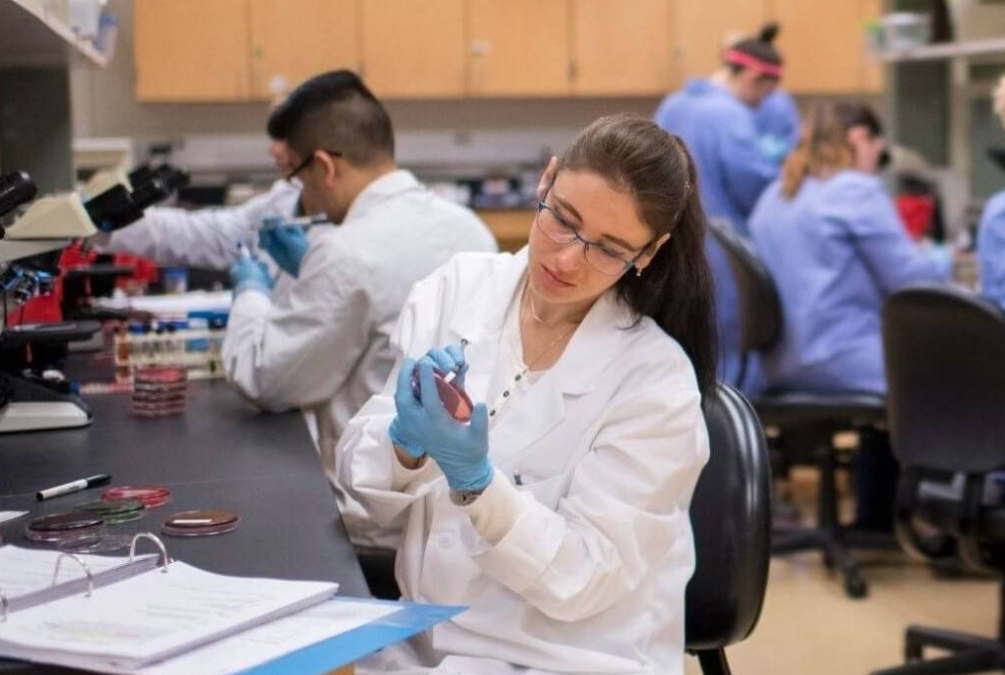Medical Laboratory Science has many specialties. Here we discuss some branches of medical laboratory sciences.
- Medical Microbiology
- Chemical Pathology
- Hematology and Blood transfusion
- Histopathology
- Immunology
Medical Laboratory Scientist
A medical laboratory scientist (MLS), also known as a medical technologist or clinical laboratory scientist, works to analyze a variety of biological specimens. They are responsible for performing scientific testing on samples and reporting results to physicians.
Medical Microbiology
Microbiologists and virologists diagnose, treat, and prevent the spread of infection, making a major contribution to clinical infection management. Both roles demand excellent clinical skills as well as first-class laboratory knowledge.
Chemical Pathology
Chemical pathology (also known as clinical biochemistry) involves the biochemical investigation of bodily fluids such as blood, urine, and cerebrospinal fluid. By discovering how and where the body’s chemistry has changed, diseases can be diagnosed and monitored.
Hematology and Blood transfusion
Hematology is the study of blood and blood disorders. Hematologists and hematopathologists are highly trained healthcare providers who specialize in diseases of the blood and blood components. These include blood and bone marrow cells. Hematological tests can help diagnose anemia, infection, hemophilia, blood-clotting disorders, and leukemia.

Transfusion science involves the analysing of a patients’ blood group and providing safe and appropriate blood or blood components. Haemostasis/coagulation involves performing a blood test to diagnose patients with bleeding or clotting disorders, and for monitoring of patients on blood thinners such as warfarin.
Histopathology
Histopathology is the study of the signs of the disease using the microscopic examination of a biopsy or surgical specimen that is processed and fixed onto glass slides. To visualize different components of the tissue under a microscope, the sections are dyed with one or more stains.
Histopathology means using a microscope to look at human tissue to see if it has signs of diseases, damage, or other abnormalities. Histology is the study of tissues, and pathology is the study of disease. Thus, histopathology means the study of tissues related to disease. A histopathology report describes the tissue that the pathologist examined. It can identify features of what cancer looks like under the microscope. A histopathology report is also sometimes called a biopsy report or a pathology report.
Immunology
Immunology is the study of the immune system and is a very important branch of the medical and biological sciences. The immune system protects us from infection through various lines of defence. If the immune system is not functioning as it should, it can result in disease, such as autoimmunity, allergy and cancer.
Are medical laboratory scientists in demand?
As the need for laboratory diagnostic procedures increases, medical laboratory scientists and other laboratory professionals are in high demand. The Bureau of Labor Statistics (BLS) projects employment for medical laboratory scientists and other lab professionals to grow faster than average through 2030.
The demand for medical laboratory scientists is growing and is projected to grow eleven percent from 2020 to 2030. Additionally, with an aging population and more health-related issues, the demand for medical laboratory scientists will increase. They often work in hospitals where they report important results from patient samples to physicians. They are not limited to health-related offices and hospitals. They can work for laboratories that handle infectious specimens or with materials that are caustic or produce fumes. Read more here!


